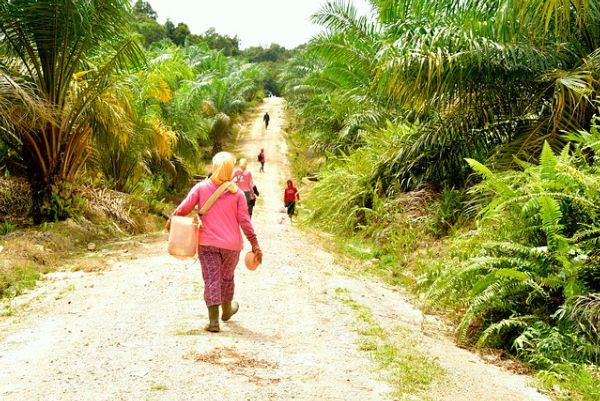New research: From elites to subsistence farmers, policies must be inclusive
New research reveals the significant diversity of palm oil smallholders in Indonesia and provides essential information to help better target policies around producer compliance to sustainability standards.
The study: Certification, good agricultural practice and smallholder heterogeneity: Differentiated pathways for resolving compliance gaps in the Indonesian oil palm sector, estimates that only 2.4 percent of independent smallholders of those researched in Indonesia Borneo, are currently able to comply with the requirements of the Indonesian Sustainable Palm Oil (ISPO) certification system.
The research defined six types of very different palm oil smallholders, including poor subsistence farmers, migrant labourers and white-collar local elites. According to the report, each group has very different challenge.
The findings suggest that policy-makers in government, NGOs and the private sector should better understand the type of smallholder producers they wish to target, because one size of policy does not fit all.
That, in turn, will lead to greater success in helping smallholders meet regulatory standards. That will also help protect their livelihoods against market access problems that threaten to emerge as companies increasingly look to deliver on their ambitious sustainability commitments.
“To develop the right policies to address the huge compliance gap, you first need to understand your smallholders,” says George Schoneveld, lead on the study and Senior Scientist with the Center for International Forestry Research (CIFOR). CIFOR led the research study which was conducted over three years.
The research, newly published in the journal Global Environmental Change, comes amid increasing public scrutiny of the oil palm sector in Indonesia.
Compliance is taking on greater urgency as smallholder numbers are expected to grow rapidly in Indonesia, says the research. Total smallholder oil palm acreage is anticipated to grow unabated, while corporate expansion rates are expected to decline in the face of supply chain pressures and moratoria on both peat and forestland conversion. That growth is attributed in part to such factors as a shift away from rubber production, a better understanding of markets and of what is involved in producing oil palms.
SOURCE
Center for International Forestry Research (CIFOR)






